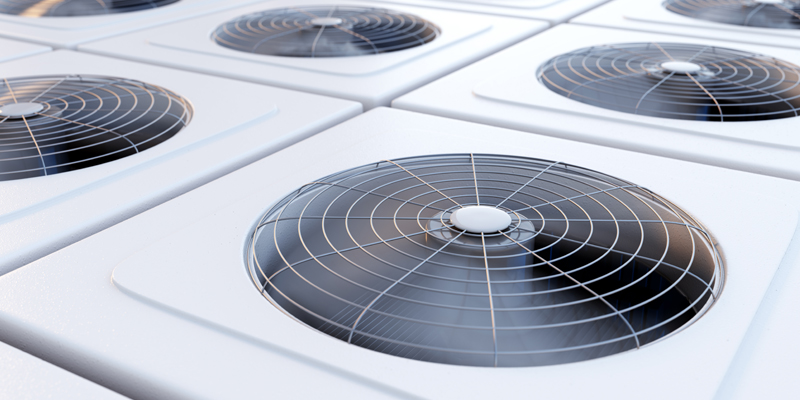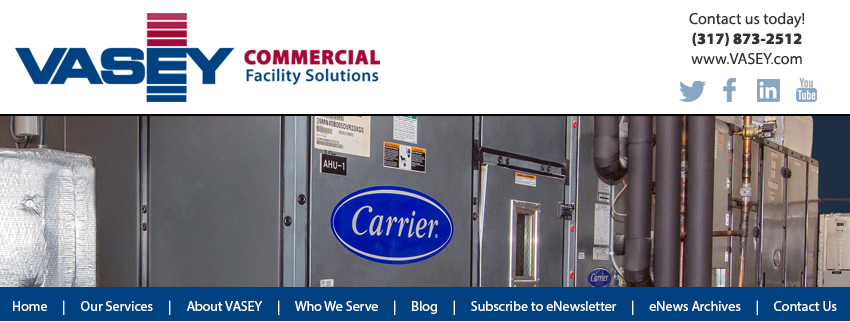How Preventive Maintenance Lowers Total Cost of Ownership |
 |
|

When budgets are tight and operations are demanding, it’s tempting to delay maintenance, especially if equipment seems to be working fine. But in commercial facility management, what you don’t see can cost you. Preventive maintenance is more than a routine checklist; it’s a long-term cost-control strategy that protects your investment, avoids unplanned downtime, and reduces the total cost of ownership (TCO) for your HVAC, plumbing, and mechanical systems.
At VASEY, we help facility leaders shift from reactive to proactive with proven maintenance programs that improve reliability and reduce operational risk.
What Is Total Cost of Ownership (TCO)? |
TCO refers to the full lifecycle cost of owning and operating a piece of equipment—not just the upfront purchase price. It includes:
| • |
Installation and setup |
| • |
Energy consumption |
| • |
Repairs and part replacements |
| • |
Downtime and productivity losses |
| • |
Service calls and emergency repairs |
| • |
End-of-life disposal or replacement costs |

Preventive maintenance directly impacts most of these categories, especially energy usage, unplanned repairs, and premature replacement.
5 Ways Preventive Maintenance Reduces TCO |
Prevents Expensive Emergency Repairs |
Unplanned failures are almost always more expensive than scheduled maintenance. A failed compressor or dirty coils during peak usage can halt operations, require rush-order parts, or force you into costly after-hours service calls. Routine inspections catch small issues before they spiral into major problems.
Just like a car engine needs regular oil changes, HVAC and plumbing systems need consistent care to stay in peak condition. Preventive maintenance helps your equipment run efficiently, reduces wear and tear, and extends its usable life—delaying capital expenditures.
Improves Energy Efficiency |
Dirty filters, worn belts, and poorly calibrated thermostats all reduce system efficiency and increase energy costs. Regular maintenance optimizes performance and keeps your systems running as efficiently as possible. That translates into lower monthly utility bills, especially for high-consumption systems like chillers, boilers, and rooftop units.
Minimizes Downtime and Business Disruption |
System failures don’t just cost money—they disrupt workflow, impact tenants or customers, and create reputational risk. A well-maintained facility is a predictable facility. Preventive maintenance reduces the likelihood of sudden failures, giving your team greater peace of mind and operational consistency.
Keeps You in Compliance and Reduces Liability |
In many industries, regular maintenance is tied to compliance regulations, safety standards, or insurance requirements. Ignoring scheduled maintenance can result in fines, policy exclusions, or liability if something goes wrong. With a documented preventive plan, you’re ahead of the curve—and covered.
Real Results from Proactive Maintenance |
We’ve seen clients reduce HVAC repair costs annually after implementing a scheduled maintenance program. Others have extended the life of their systems simply by adhering to a quarterly inspection and service routine. These aren’t theoretical benefits; they’re tangible savings that directly impact your bottom line.
We tailor each preventive maintenance program to the unique needs of your facility, considering system age, usage, criticality, and manufacturer requirements. Our team works with your schedule and your budget, helping you reduce TCO without disrupting daily operations.
From rooftop units to boilers, from plumbing inspections to full mechanical system reviews, we’ve got you covered.
Skipping maintenance may seem like short-term savings—but it often comes at a much higher long-term cost. If your goal is to control expenses, reduce risk, and maximize the value of your systems, preventive maintenance is the smart move.
Let’s talk about a plan that works for your facility—before problems become emergencies.

What You Need to Know About Future HVAC Price Increases |
|

If you're responsible for managing HVAC systems in a commercial facility, you’ve likely noticed a trend: prices are increasing, and fast. Across Indiana and the U.S., equipment costs are rising due to regulatory changes, material surcharges, and manufacturer transitions—all of which impact capital budgets and operational planning.
At VASEY, we want to help you understand what’s behind the shift—and how to make the most strategic decisions for your facility.
What’s Driving the Price Increases? |
Regulatory Shifts Are Rewriting the Playbook |
As of January 1, 2025, HVAC manufacturers will no longer be allowed to produce systems using R-410A Refrigerant. This long-used standard is being phased out as part of federal environmental initiatives. Replacing it are new systems that use low-GWP A2L refrigerants like R-454B—which require new system designs, additional safety components, and trained installation teams.
These newer systems are being priced at a 10–20% premium, and manufacturers have signaled that pricing for legacy equipment will also rise as supplies dwindle.
Material and Labor Pressures |
Costs for raw materials—such as copper, steel, and aluminum—have surged. And with labor markets tightening and insurance premiums climbing, installation and service work have become more expensive industry-wide.
This is especially important for commercial systems, where custom fabrication, specialized controls, and large-scale integration can amplify these costs.
Timing Matters—Especially in Indiana |
In Indiana, the heating and cooling seasons can be intense—and unpredictable. This drives sharp demand cycles, making equipment availability and scheduling more competitive as deadlines approach.
If you're planning HVAC upgrades, replacements, or new installations in 2024 or early 2025, we strongly recommend taking a proactive approach to protect your budget and avoid potential delays.
Our team is already working ahead of the curve. We’re:
| • |
Preparing for refrigerant transitions with certified training and safety protocols in place |
| • |
Monitoring supply chain trends to advise you on timing, costs, and availability |
| • |
Customizing commercial solutions that align with operational priorities and compliance requirements |

Whether you manage a facility, oversee capital projects, or support long-term infrastructure planning, we’re here to help you navigate this shift confidently.
Planning an HVAC upgrade or system replacement? Now’s the time to act. Contact VASEY today to schedule a consultation and avoid potential cost or supply disruptions.

Click below to review a team member profile.
|

